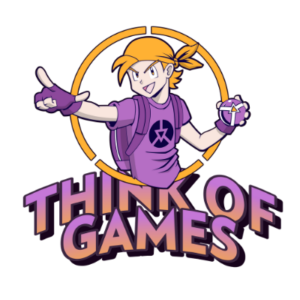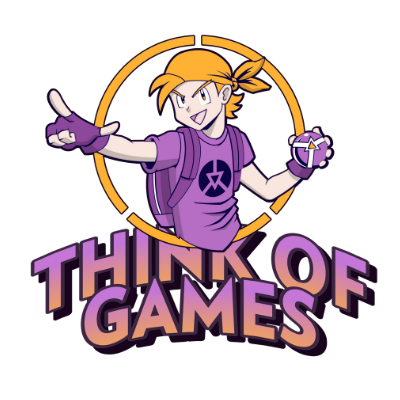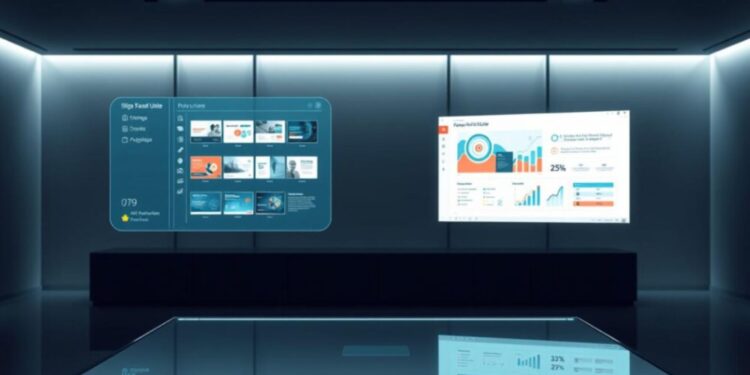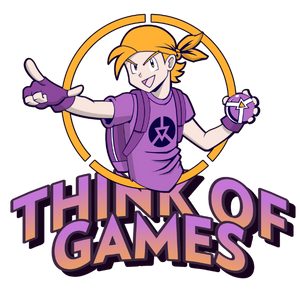In today’s fast-paced business, academic, and tech environments, the ability to turn an idea into a polished, persuasive, visually appealing presentation can make the difference between persuading—or being ignored. Traditional presentation design is often time‐consuming, requiring manual layout work, sourcing data, creating visuals, ensuring branding consistency, gathering references, and more.
Skywork AI Slides Super Agent is presented as a response to this challenge: a tool that integrates research, design, and automation into a unified, AI-powered platform. With it, users can generate “investor-grade decks in minutes,” complete with brand-aligned designs, data visualizations, even verifiable citations. Let’s explore what this tool is, how it works, its features, potential benefits, and considerations.
What is Skywork AI Slides Agent
Skywork AI is an AI-powered office suite, and its Slides Super Agent is the component focused on slide creation. The core idea is to streamline and accelerate the slide development process using a combination of natural language interfaces, design automation, built-in research and citations, and visual generation.
Some of the key claims:
- Deep Research & Citations: The tool doesn’t just allow you to put content into slides; it helps you draw on credible sources, gathers supporting data automatically, and provides citations. This is especially useful if you are preparing proposals, reports, or pitches that require data to back up claims.
- Branded Templates: Ensuring consistency with brand identity (colors, logos, typography) is often an afterthought, yet important. Skywork AI claims to let you instantly apply your organization’s style guide, so every slide looks like it comes from the same visual family.
- Auto Data Visuals: Rather than manually creating charts, graphs, infographics, etc., users can feed raw data and ask the tool to transform that into visuals. This helps non-designers produce high-quality graphics.
- Multi-Format & Collaboration: Exporting to PPTX or Google Slides; team collaboration; even generating documents or podcasts from the same content. Flexibility across formats and enabling teamwork are key.
- Design Automation: Layout, font selection, image placement — all handled via natural-language prompts rather than manual tinkering. The idea is: you focus on message and content, the agent handles the look.
Key Features
Here are the prominent features of Skywork AI Slides Super Agent, more fully described, with possible implications and use cases.
| Feature | What It Does | Why It Matters / Use Cases |
| Natural-language prompt design | Users can type commands like “make a 10-slide investor deck about X” or “show data trends for Y between 2018-2024,” and the agent begins building the slides automatically. | Saves time; non-designers can achieve professional results. Useful in startups, consultancies, academic settings, marketing. |
| Automatic research & citation | The system looks up sources, gathers data or findings, and includes verifiable citations. | Improves credibility; helps when you need to back arguments with evidence; reduces manual lookup errors. |
| Brand identity integration | You can set your logo, colors, fonts, style guide once; the agent applies them across layouts. | Consistency; saves repetitive work; ensures brand compliance in corporate settings. |
| Data-to-visual conversion | Raw numbers or data (e.g. in tables or CSVs) can be turned into charts, graphs, or infographics. | Helps make data digestible, visually compelling; essential when presenting KPIs, financials, or analytics. |
| Collaboration & export | Export to common formats; edit live with teammates; generate alternate content (documents, podcasts) from the same core. | Useful for distributed teams; multiple content outputs; reuse of work. |
| Design elements automated | Layouts, fonts, image placement, etc., handled via AI. | Reduces tedious manual layout work; helps avoid design mistakes or inconsistency; speeds up iteration. |
Benefits & Opportunities

Leveraging a tool like Skywork AI Slides Super Agent offers a number of clear advantages, as well as new opportunities in how work is done.
- Time efficiency
Generating a full, polished slide deck can often take hours or days if starting from scratch: drafting content, organizing structure, finding visuals, formatting. With AI Slides, much of that is automated. That means faster turnaround times for reports, pitches, educational materials, etc. - Improved design quality
Not everyone is a slide design expert. Consistency in layout, good typography, balanced use of graphics, whitespace—all these often suffer. An AI designer that enforces best practices (or trained models) can raise the baseline quality, even for teams without strong design skills. - Data credibility
When data is cited and sources are shown, the audience tends to trust more. In investor decks, business plans, academic reports, proposals to stakeholders, having verifiable citations is crucial. - Brand consistency
Many organizations struggle with inconsistent presentation styles. Allowing a central style guide to be automatically applied removes friction, reduces errors, and ensures a cohesive identity. - Scalability & adaptability
Because slides can be exported, edited, repurposed, and collaborated on, content can be scaled. A deck made for investors might be repurposed for clients, or parts of it used in reports, webinars, or blog posts. The ability to output multiple formats aids this. - Lowering learning curve
For students, newer employees, or people less familiar with presentation design software, such tools reduce the barrier to creating professional work. Even for experts, it reduces repetitive, mechanical tasks.
Potential Limitations & Challenges
No tool is perfect. While Skywork AI Slides Agent promises a lot, here are some potential pitfalls, trade-offs, and things to watch out for.
- Accuracy of research & citations
- The effectiveness of the “deep research” feature depends on which sources are accessible to the AI, how up‐to‐date they are, how reliable. If sources are outdated or low quality, that could mislead.
- Citation correctness (linking to the exact statistic used) is important; if this feature is imperfect, errors may arise.
- The effectiveness of the “deep research” feature depends on which sources are accessible to the AI, how up‐to‐date they are, how reliable. If sources are outdated or low quality, that could mislead.
- Over-automation risks
- Design automation is helpful, but sometimes nuance matters: perhaps a certain layout works better for a particular audience; automated image selection might pick something generic or irrelevant.
- The tool might make design choices that are suboptimal for specific content (e.g. dense text, specialized visuals) without human oversight.
- Design automation is helpful, but sometimes nuance matters: perhaps a certain layout works better for a particular audience; automated image selection might pick something generic or irrelevant.
- Creative control & uniqueness
- Presentation templates and auto layouts are convenient, but may lead to decks that look somewhat similar to what others produce. For highly creative or differentiated branding, there may still need to be manual design.
- Users might find themselves constrained by what the tool supports; custom or unusual visualizations might be hard to achieve.
- Presentation templates and auto layouts are convenient, but may lead to decks that look somewhat similar to what others produce. For highly creative or differentiated branding, there may still need to be manual design.
- Learning curve & prompt-engineering
- To get good results, users may need to learn how to write effective prompts. If the prompts are vague, outputs might be weaker.
- There may be trial-and-error involved, especially for first-time users.
- To get good results, users may need to learn how to write effective prompts. If the prompts are vague, outputs might be weaker.
- Cost & access
- SaaS tools like these often have subscription models; for organizations or individuals, cost vs benefit must be weighed.
- Internet access, performance, data privacy are also considerations—especially for organizations with sensitive content.
- SaaS tools like these often have subscription models; for organizations or individuals, cost vs benefit must be weighed.
- Format compatibility & exporting quirks
- Exporting to PowerPoint or Google Slides may introduce formatting mismatches, especially when transitioning from AI-designed elements to manual edits.
- Dependence on these formats could also limit integration with other tools or platforms.
- Exporting to PowerPoint or Google Slides may introduce formatting mismatches, especially when transitioning from AI-designed elements to manual edits.
Use Cases & Examples
To see how Skywork AI Slides Agent might be used in real life, here are several hypothetical and plausible scenarios:
- Startup Investor Pitch
A founder needs to pitch to VCs next week. They have the core business idea and data but no slides. Using Skywork AI, they feed in the data (revenue, growth, market size), provide brand assets, ask for a 10-slide investor deck. The tool produces: competitive analysis slides, market size chart, financial projections graph, team slide, timeline, branding, etc. Then the founder tweaks a few slides, adds personality, and is ready. - Academic Lecture or Teaching Module
A professor has to prepare a lecture on “Climate Change Impacts in South Asia.” The professor gives AI Slides some lecture notes or an outline. The tool researches (facts, statistics, recent studies), cites sources, fetches visuals or designs infographics, and lays out slides with the professor’s institution branding. Time saved means more focus on content or fieldwork. - Corporate Reporting / Internal Board Update
In a corporation, quarterly board updates or internal reporting often require consistency: metrics, KPIs, graphs, branding. The team can use Skywork AI to pull together data, generate visuals, ensure brand compliance, and deliver reports quickly. Collaboration tools mean multiple team members can refine content. - Marketing or Product Launch
When a product line is launching, marketing teams need visuals, content, press decks, feature comparisons, etc. AI Slides can help build consistent marketing decks, integrating brand guide, generating comparison charts, timeline of launch, visuals for product features. - Proposals & Business Development
A consultant or freelancer might need to prepare multiple proposals for different clients. With branded templates, data visuals, and citation abilities, each proposal can be faster to prep, more polished, and more convincing.
How It Works: Behind the Scenes (Probable Architecture & Workflow)
While Skywork isn’t publishing full technical details (at least not on the page), based on what the site says and common practice, we can infer how some parts might work, and where the AI “magic” likely resides.
- Prompt parsing & content planning
The system takes your natural-language prompt (“Make a deck about X with Y slides”) and breaks it down: what is the topic? How many slides? What content types are needed (introduction, data slides, visuals, conclusion)? Then it lays out a skeleton or structure. - Research & data sourcing
Using web-search APIs or proprietary data sources, the agent finds relevant facts and statistics, trending data, up-to-date research, credibility rankings of sources, etc. It picks out what’s most useful for the prompt, perhaps filters by recency or geographic relevance, and aggregates key insights. - Branding engine
The tool likely has a style manager: when you upload or select your color palette, font preferences, logo, etc., it saves a theme. The layouts, slide masters, and visual assets then inherit from that theme. - Visual generation engine
For charts/graphs/etc., it probably converts raw data to visual formats using a charting library. It must decide: bar vs line vs pie chart, what color scheme, how to label, how to organize layout. For infographics or illustrative visuals, it may use image generation (if supported) or sourcing from stock images or licensed graphics. - Design automation / layout
Slide layout algorithms decide where to place titles, bullet points, images, white space, background, etc. - Export & collaboration layer
Once the content is ready, it must be converted into formats like PPTX, Google Slides. Version control / collaborative editing suggests there is an online editing interface. - User input / feedback loop
Users can probably edit the auto-generated content, adjust visuals, swap out data, etc. There may be iterative refining: “make that slide more visual,” “less text,” etc. The system may allow prompts for feedback to adjust designs or content.
Comparison with Alternatives
To appreciate the value, it helps to see how Skywork AI Slides stacks up or differs from other existing tools:
- Traditional slide tools (PowerPoint, Keynote, Google Slides) — offer flexibility and full manual control, but require time, design sense, manual formatting. Skywork automates many steps these tools leave to users.
- Simplified design tools / templates (Canva, Beautiful.ai, Visme, Prezi, etc.) — many provide templates, some auto-layout features. But often the research/sourcing of data and citation features are weak or absent. Brand guide adherence may need manual setup, or inconsistencies may creep in.
- AI presentation assistants (some newer entrants, or add-ons to existing tools) — some tools allow content generation, outline help, or design suggestions. Skywork appears to combine more: content + design + citation + branding + full export and collaboration.
- Full content creation tools / report tools (e.g. Notion + add-ons, or AI writing tools) — these may help write content or do research, but often do not integrate design/visual generation or slide layout.
So Skywork attempts to cover a full spectrum: from idea → researched content → designed slides → export + collaboration, which is a strong value proposition if executed well.
Practical Tips for Getting the Most from Skywork AI Slides
To leverage such a tool well, here are best practices and strategies:
- Clear, detailed prompts
The more specific you are (number of slides, topic, audience, tone, whether you want charts, style), the better the generated results. Example: “Create a 12‐slide investor pitch deck for a SaaS startup targeting Series A funding in health tech. Include market size, competitive landscape, traction, financial projections, and a roadmap.” - Provide brand assets up front
Upload your brand colors, fonts, logo, slide templates. If these are ready in the system, the AI can ensure consistency. - Review and customize
AI outputs are rarely perfect. After the auto-generation, review the content: refine the narrative, check data sources, tweak visuals. Personal touches (like custom images, anecdotes) often make a difference. - Use the visualization tools wisely
Data visuals are powerful, but choosing the right type (e.g. bar vs line vs scatter) matters. Make sure the representation matches what you want to communicate. Also, avoid clutter; each chart should be readable. - Ensure citation validity
If the tool automatically cites research, double-check that the sources are credible and accurate. For sensitive or high-stakes content (legal, investment, public speaking), you may want to verify sources manually. - Iterate & gather feedback
Use the collaboration features: have colleagues comment. Use drafts to test with small audiences, gather feedback, then refine before formal presentation. - Export and adapt for different contexts
Think about how your slides might be used beyond the immediate presentation. Can parts become blog posts, handouts, social media graphics? Skywork AI’s ability to output in different formats is useful; plan for reuse. - Manage scope
Because the tool can do a lot, avoid the temptation to depend too heavily on automation for everything. Especially for critical slides (executive summary, conclusion, ask), personal narrative, emotional hook – these often benefit from manual crafting.
Potential Impact & Future Directions
Looking ahead, tools like Skywork AI Slides have the potential to reshape how presentations are made, in both enterprise and individual contexts. Some possibilities:
- Democratization of quality design
As AI makes high-quality design and visuals more accessible, more people and organizations can present confidently. Knowledge work that used to require designers or specialized skills becomes more attainable. - Faster iteration cycles
Proposals, reports, pitches can be updated more quickly. With data integrated and visuals auto-formatted, tweaking numbers or content becomes easier. Teams can respond faster in competitive environments. - Better storytelling & data-driven persuasion
Because research and visuals are integrated, content becomes more evidence-based and persuasive. The narrative can be better supported by data which is visually clear and credible. - Integration with other AI tools
Possibilities include integration with AI writing assistants, transcription tools, voice-overs, video generation, or even virtual/augmented reality presentation formats. Skywork or future tools may expand to support richer media. - Customization & personalization at scale
For businesses with many teams or localized branches, the ability to have template variations per region/language while keeping overall brand identity could be powerful. - Ethical / responsible AI considerations
As these tools access and surface research, how they handle attribution, bias, source credibility, misinformation becomes more important. Ensuring transparency, correctness, avoidance of plagiarism, and respecting copyright will be critical.
Considerations & Risks
While the promise is strong, there are real risks and trade-offs, especially as this sort of tool becomes widespread.
- Reliability of automated research: The AI must avoid misinformation, outdated data, or misinterpretation. Users should not blindly trust outputs; validation remains essential.
- Homogenization of style: If many people use the same AI agent and default templates, presentations may become visually similar, reducing differentiation.
- Overdependence on tools: Designers, communicators may lose some craftsmanship if their role is minimized; or users may struggle to make content that requires creative or unusual design choices.
- Data privacy & security: If sensitive or proprietary content is involved (e.g. financial data, internal strategy), uploading that to AI platforms requires trust, secure data handling, and possibly compliance with regulations.
- Cost vs value balance: Subscription fees, usage limits, export limits, or premium features may introduce costs; organizations must evaluate ROI.
- Usability barriers: While AI can help, users still need to learn to write good prompts, interpret AI suggestions, and correct imperfections.
Example Walk-Through
To make this more concrete, here’s a hypothetical step-by-step of using Skywork AI Slides for a particular project.
Scenario: A sales manager, Sara, for a software company wants to prepare a 15-slide presentation to pitch a new product feature to potential enterprise clients. She needs it by end of day tomorrow.
- Outline & prompt
Sara opens Skywork AI Slides Agent and enters:
“Create a 15-slide sales pitch deck for a new product feature that enhances data security for enterprise clients. Include problem statement, market opportunity, product overview, use cases, competitive landscape, security compliance, pricing, implementation plan, and customer testimonials.” - Brand assets
She ensures the company logo, brand color palette, and typography are loaded. She picks a template consistent with the brand identity. - Research & data gathering
The agent pulls statistics about enterprise data breach costs, market size for data security products, relevant compliance standards (e.g. GDPR, ISO), competitor benchmarking. Citations appear for each statistic. - Auto visuals
Using raw data (internal + market), she gets visuals: a bar chart showing rising breach incidents over recent years; a pie chart of market share; a timeline of compliance milestones; infographics for use-case scenarios. - Layout & design
The tool lays out slides, placing titles, graphs, images, adding whitespace, ensuring readable fonts and balanced slide compositions. It matches images (maybe stock photos, graphics) to content where appropriate. - Review & edit
Sara goes through slides: she edits one use-case slide, adjusts wording; tweaks visuals for clarity; removes parts she doesn’t need. She adds a custom customer testimonial (with photo) not included automatically. - Collaboration
She invites a colleague in product management to review. They adjust some slides, check compliance slides, adjust design tweaks. - Export & rehearsal
Once ready, she exports to PowerPoint, tests transitions, rehearses presentation. She also might export as a Google Slides version to share with remote stakeholders. - Follow-ups
She reuses some slides for a proposal doc, and perhaps adapts visuals for marketing collateral or a blog post summarizing product benefit.
Evaluating If Skywork AI Slides Is Right for You / Your Organization
To decide whether to adopt this tool (or one like it), consider the following criteria.
| Decision Criterion | What to Check |
| Presentation frequency | Does your work involve making frequent presentations/pitches/proposals? If so, automation helps more. |
| Design resources | Do you have in-house designers? Or are you relying more on non-designers? If non-designers make many presentations, this kind of tool adds more value. |
| Need for branding consistency | If you must adhere strictly to brand guidelines (enterprise, regulated industries, etc.), having that built in is valuable. |
| Importance of data / research | If your presentations need to be backed by credible data and sources, tools that can automatically research & cite are useful. |
| Budget & cost sensitivity | Subscription or premium features may cost; ensure the investment is justified. |
| Security & privacy | If you handle sensitive data or IP, you’ll want to evaluate the privacy policies, data storage, access controls. |
| Flexibility and customization needs | If your content often deviates from standard layouts or requires very custom visuals, ensure the tool supports that or allows manual override. |
| Collaborative workflows | If multiple stakeholders edit and approve slide decks, real-time collaboration, version control, shared template repos matter. |
Conclusion
Skywork AI Slides Super Agent appears to be a powerful tool in the growing field of AI-assisted presentation and content creation. By combining research, design, branding, data visualization, automation, and export/collaboration features, it addresses many of the friction points in the slide creation workflow.
For individuals and organizations that regularly create presentations—startups raising capital, marketing teams launching new products, consultants preparing proposals, educators preparing lectures—this kind of tool promises to save time, improve output quality, and enable better storytelling backed by data.
That said, no automated tool replaces human judgment, especially around narrative, nuance, and creative differentiation. For high-stakes presentations, users should use Skywork AI Slides as a powerful assistant—accelerating many parts of the process—while retaining oversight on messaging, visuals, and content integrity.


















